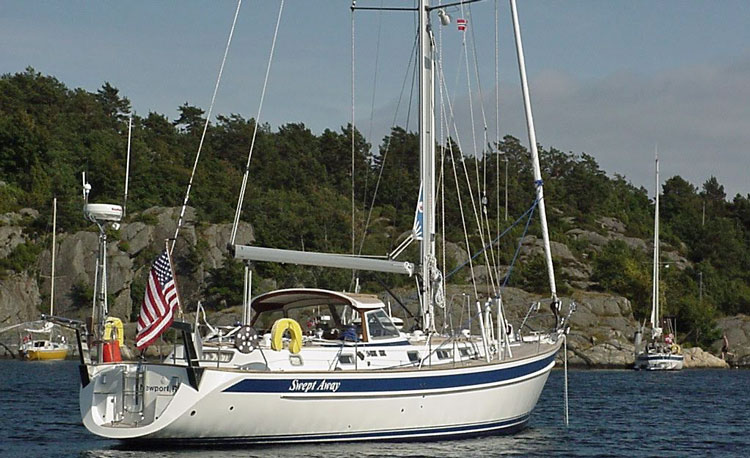 |
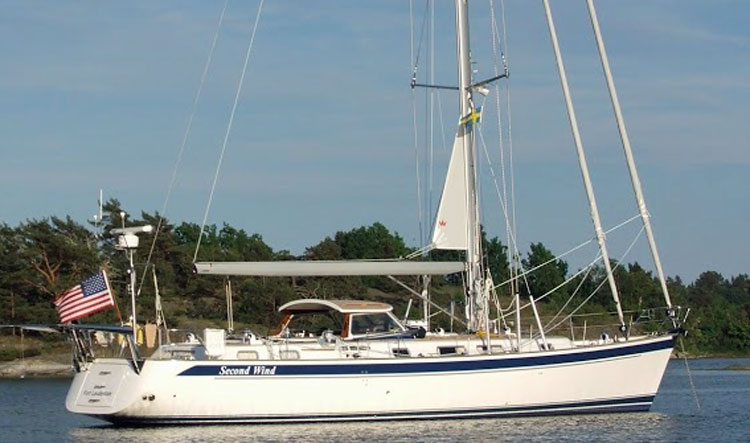 |
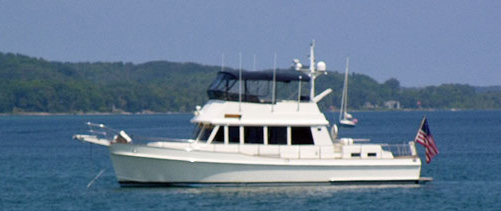 |
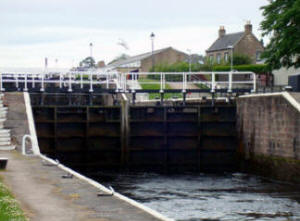 |
Here's how the closed lock looks when it's time for you to enter.
The lock keeper instructs you when to go in and on what side to tie up.
You put as many fenders as you can on the side that will go against the
concrete. You cleat a line to your bow and another one to the stern. |
|
When you go through a single lock, the lock keeper takes the line from you, wraps it around a hook on the dock, and returns the end to you. You need a long line for this, because you'll be far away from that hook going in (while you're rising) or at the end of your stay in the lock (while you're going down). In a set of multiple locks (called a flight or a stairs), it's best to have two people on shore to manage the connection to shore between locks, and two people on the boat to manage the connections on the boat while the water in the lock is rising or falling. |
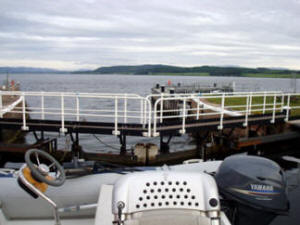 |
|
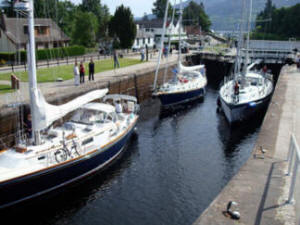 |
It's often the case that you share the lock with other boats transiting the canal. Here, coincidentally, we were traveling alongside two other American-flagged vessels. | |
| On the way up, water from the lock in front of you flows out into your lock. Water is pumped into your lock to equalize your level so that you can move into the next lock. |
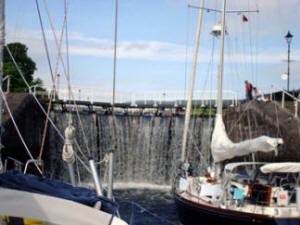 |
|
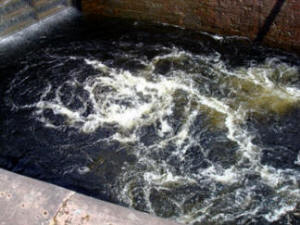 |
The rising water in your lock creates turbulence. The boats at the front of the lock experience more of this than the ones at the back. | |
| While you're moving up or down, your fenders keep the hull from scratching against the concrete dock. But the motion inside the lock means that you have to be careful to keep the boat from banging around too much. |
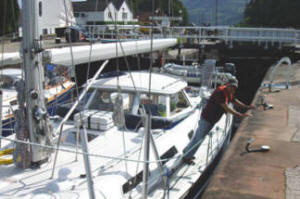 |
|
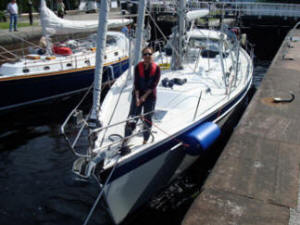 |
While the lock is rising, the long line you've used gets less taut, and you need to pull in the slack to keep the boat steady in its place. | |
| In time, the lock reaches the level of the next lock or the continuing canal and the doors are opened. This is your signal to pull in your lines and exit the lock. |
 |
|
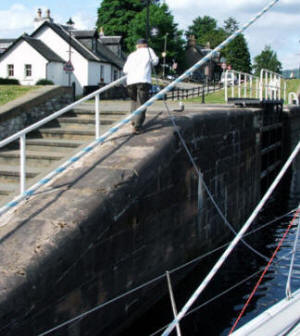 |
For multiple locks in a row, Jack and Sammie stayed on shore and
managed our lines from there. When we left one lock and motored to the
next one, they carried our lines along and hooked them to the new
location. Though it does seem as though Jack is our human mule, he doesn't actually have to drag the boat from one lock to the next one. |
|
| All along the canal, we're surrounded by glorious scenery. |
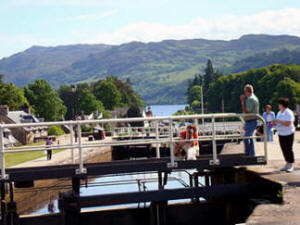 |
|
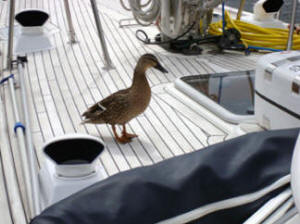 |
At one point, we had a visitor. We'd chase her off, but she was persistent. Maybe she saw a kindred spirit in our yellow hose. | |
| Art discovered that a collapsible boathook probably isn't the best tool to fend off our thirty tons of vessel. |
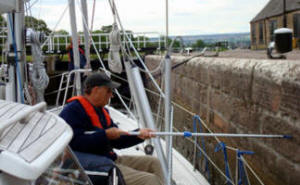 |
|
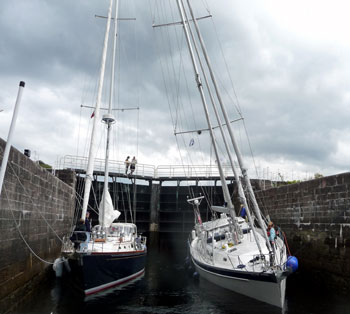 |
In the unlucky-for-us Loch Lochy lock, our stern line jammed while we
were on the way down. Here, the weight of Second Wind is being held out
of the water by two braided lines and our admirable cleats. Shouting from all of us in the canal brought the situation to the attention of the lock keeper, who filled the lock back up so that we could free the line and try again. It was, at the very least, a sobering reminder of what could go wrong. Remarkably, our hull never brushed the concrete side of the lock and our mast never kissed our next-door neighbor's. Thanks for the photo, Tally! |